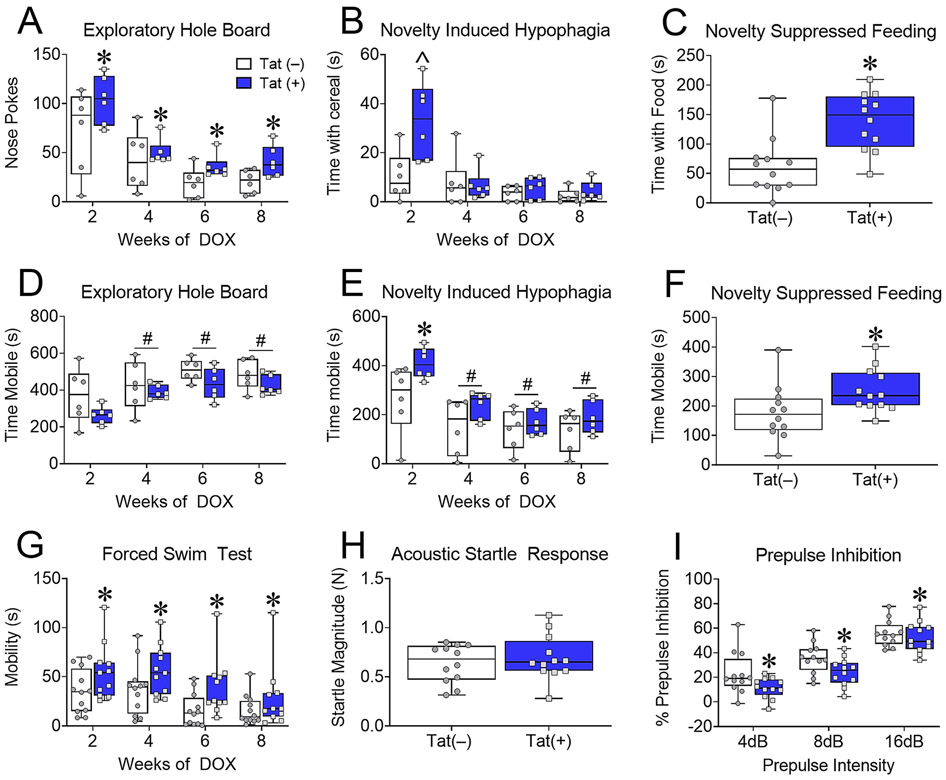Fig. 1.
HIV-1 Tat increases novelty-exploration, while decreasing adaptability and pre-attentive filtering in novel environments. Tat(+) and Tat(−) mice were fed DOX chow for 8 weeks and assessed in ACC-mediated measures of behavioral control. Measures of novelty-exploration (A–C). Tat(+) mice exhibited increased exploratory hole-board nose pokes following 2–8 weeks of DOX (A). Tat exposure increased interactions with palatable food after 2 weeks (B) and regular food interactions in a novel environment following overnight deprivation after 8 weeks of DOX (C). Locomotor activity in novelty-exploration tests (D-F). Tat(+) and Tat(−) mice displayed increased mobility in the exploratory hole-board test at 4–8 weeks compared to 2 weeks of DOX exposure (D); whereas in the novelty-induced hypophagia test Tat exposure increased mobility at 2 weeks, but regardless of genotype, mice exhibited decreased mobility at 4–8 weeks (E). In the novelty-suppressed feeding test, Tat increased locomotor activity (F). Tat exposure for 2–8 weeks increased mobility in the forced swim test (FST) (G). After 8 weeks of DOX administration, Tat exposure did not affect acoustic startle response (H), but did decrease prepulse inhibition (PPI) or the ability to ignore irrelevant stimuli (I). Data are presented as mean ± SEM; (A-B & D-E) n = 6 mice per group; (C & F-I) n = 12 mice per group; p < 0.05 vs Tat(−) (control) mice at 2 week exposure time. Main effect of Tat, *p < 0.05 vs Tat(−) (control) mice. Main effect of exposure time, #p < 0.05 vs 2 weeks of DOX.

